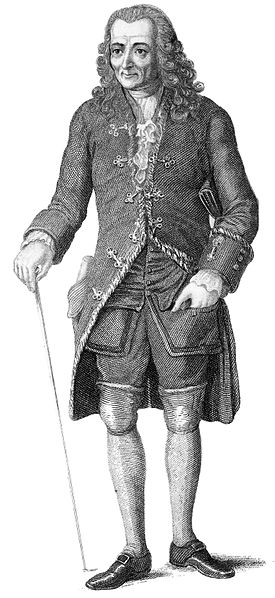Candide, ou l'Optimisme is a French satire written by Voltaire, a philosopher of the Age of Enlightenment, first published in 1759. The novella has been widely translated, with English versions titled Candide: or, All for the Best (1759); Candide: or, The Optimist (1762); and Candide: Optimism (1947). It begins with a young man, Candide, who is living a sheltered life in an Edenic paradise and being indoctrinated with Leibnizian optimism by his mentor, Professor Pangloss. The work describes the abrupt cessation of this lifestyle, followed by Candide's slow and painful disillusionment as he witnesses and experiences great hardships in the world. Voltaire concludes Candide with, if not rejecting Leibnizian optimism outright, advocating a deeply practical precept, "we must cultivate our garden", in lieu of the Leibnizian mantra of Pangloss, "all is for the best" in the "best of all possible worlds".

The title-page of the 1759 edition published by Cramer in Geneva, which reads, "Candide, or Optimism, translated from the German by Dr. Ralph."
This 1755 copper engraving shows the ruins of Lisbon in flames and a tsunami overwhelming the ships in the harbour.
Engraving of Voltaire published as the frontispiece to an 1843 edition of his Dictionnaire philosophique
1803 illustration of the two monkeys chasing their lovers. Candide shoots the monkeys, thinking they are attacking the women.
François-Marie Arouet, known by his nom de plume M. de Voltaire, was a French Enlightenment writer, philosopher (philosophe), satirist, and historian. Famous for his wit and his criticism of Christianity and of slavery, Voltaire was an advocate of freedom of speech, freedom of religion, and separation of church and state.
Portrait c. 1720s, the Musée Carnavalet
Voltaire was imprisoned in the Bastille from 16 May 1717 to 15 April 1718 in a windowless cell with ten-foot-thick walls.
In the frontispiece to Voltaire's book on Newton's philosophy, Émilie du Châtelet appears as Voltaire's muse, reflecting Newton's heavenly insights down to Voltaire.
Pastel by Maurice Quentin de La Tour, 1735








